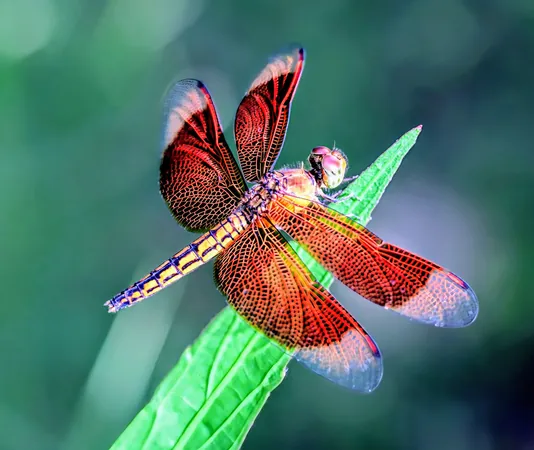
How Dragonflies Use Wing Coloration to Beat the Heat: A Climate Survival Strategy
2024-10-11
Author: Wei
The Intriguing Link Between Color and Tolerance
The research revealed that dragonfly species that evolved dark breeding colors on their wings also developed an impressive ability to endure elevated temperatures. Leith remarked, “Our findings could open the door to a new field of research examining the interplay between thermal traits and sexual signals.”
Heat Stress Research: The Methodology
To investigate this phenomenon, the researchers studied 19 species of dragonflies, comprising 14 from tropical climates and 5 from temperate regions. They found that species possessing dark wing patterns had evolved to tolerate heat stress significantly better than lighter species. Notably, the tropical species *Tauriphila argo*, known as the arch-tipped glider, showcased the highest heat tolerance, equipped with dark wing patches that absorb more heat.
How Evolution Shapes Survival
While previous studies indicated that increasing global temperatures pressured some dragonfly species into exhibiting less wing coloration, this new research suggests that those adaptations—once achieved—may offer residual heat tolerance even if coloration diminishes.
Implications for Biodiversity Conservation
In a world facing rapid warming, understanding how reproductive adaptations can influence species survival has profound implications for biodiversity conservation.
Leith concludes, "We must have a nuanced understanding of animals’ responses to environmental changes—considering their reproductive traits might just be key to their survival during heat waves." As researchers turn their gaze toward the thousands of dragonfly species worldwide, the potential to discover broader trends across other life forms remains tantalizing.
The revelations from this study signal that adaptive strategies in reproduction and physical traits—like wing coloration—could be critical for the survival of species facing extreme heat in the future. As scientists continue to unravel these intricate connections, preserving our planet's biodiversity remains a pressing priority.


 Brasil (PT)
Brasil (PT)
 Canada (EN)
Canada (EN)
 Chile (ES)
Chile (ES)
 España (ES)
España (ES)
 France (FR)
France (FR)
 Hong Kong (EN)
Hong Kong (EN)
 Italia (IT)
Italia (IT)
 日本 (JA)
日本 (JA)
 Magyarország (HU)
Magyarország (HU)
 Norge (NO)
Norge (NO)
 Polska (PL)
Polska (PL)
 Schweiz (DE)
Schweiz (DE)
 Singapore (EN)
Singapore (EN)
 Sverige (SV)
Sverige (SV)
 Suomi (FI)
Suomi (FI)
 Türkiye (TR)
Türkiye (TR)